


SUBMISSIONS
see ncaea.org for information regarding newsletter submissions or email the editor at bydesign@ncaeaorg




SUBMISSIONS
see ncaea.org for information regarding newsletter submissions or email the editor at bydesign@ncaeaorg
The North Carolina Art Education Association (NCAEA) is an active advocate for promoting visual arts education in K-12 public and private schools, higher education, museums, arts centers, and arts councils across the state. It is affiliated with the National Art Education Association.
To promote and improve the quality of visual arts education in the state of North Carolina The North Carolina Art Education Association will focus on three broad categories to accomplish its goals: leadership, service, and advocacy.
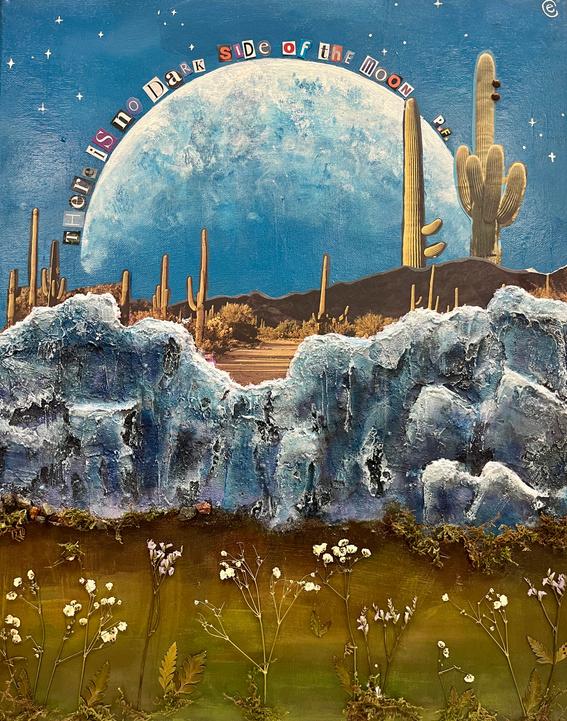
By Eleni Curtis, 12th Grade Mixed Media Teacher Trish Klenow Green Level High School
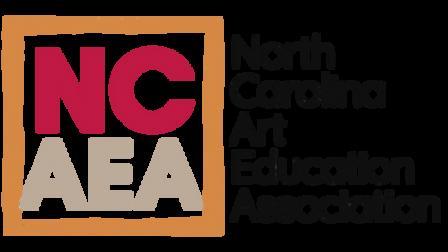
www.ncaea.org
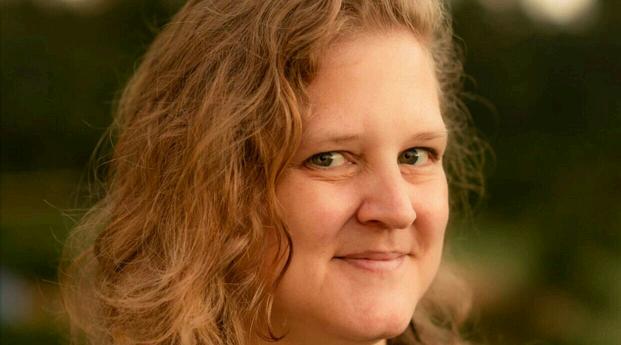
A huge thank you to everyone for your patience, resilience, and support throughout 2024 Please keep Western Carolina in your mind and keep sending items to them. We appreciate everyone who aided the process at this year ’ s conference in making the art kits. We assembled and donated over 1,000 art kits. Two hundred alone were from Frann Paige and her students/community Please keep it going! They need our help!
Another huge shout out to the NCAEA board and all the helpers this year with conference. With the hurricane, we were in limbo for a while and did not know if we would have the conference in Asheville. We appreciate all the Western Carolina members who supported us coming and welcomed us We cannot say thank you enough I also want to place a shout out to everyone for their flexibility We had vendors and presenters pull out at the last minute and people went along with it. We hope 2025’s conference in Asheboro will continue NCAEA’s growth and community.
For those who missed the conference, we had great guest speakers; Melody Weintraub, Linda Royal, and Cassie Stephens! They brought wonderful knowledge and energy to the conference I hope people had a chance to interact with them while they were there. NCAEA will keep everyone aware of when Linda Royal released the Minnie Evans documentary and more information as it’s released.
A huge thank you to the North Carolina Museum of Art for their
sponsorship of the Presidents’ Reception. They created a makerspace, brought a 3D printer to recreate pieces from the museum ’ s collection, and connected us with artists Rhett Hissam and Emin Gadzhiyev The museum ’ s staff also presented throughout the conference shining a light on all the possibilities teachers can integrate into their classrooms/lessons and utilize from the museum. Thank you!
Again without everyone ’ s help and flexibility the conference would not have happened. I truly appreciate everyone ’ s support. Please know that all the CEU certificates have been sent out to those who have paid and completed the NCAEA conference survey Each year the NCAEA board and conference committee reviews the survey ’ s information and adjusts each year ’ s conference on what our members’ needs and wants are. Thank you for your feedback.
We look forward to seeing you this fall in Asheboro October 9th through the 12th, 2025
Warmly,
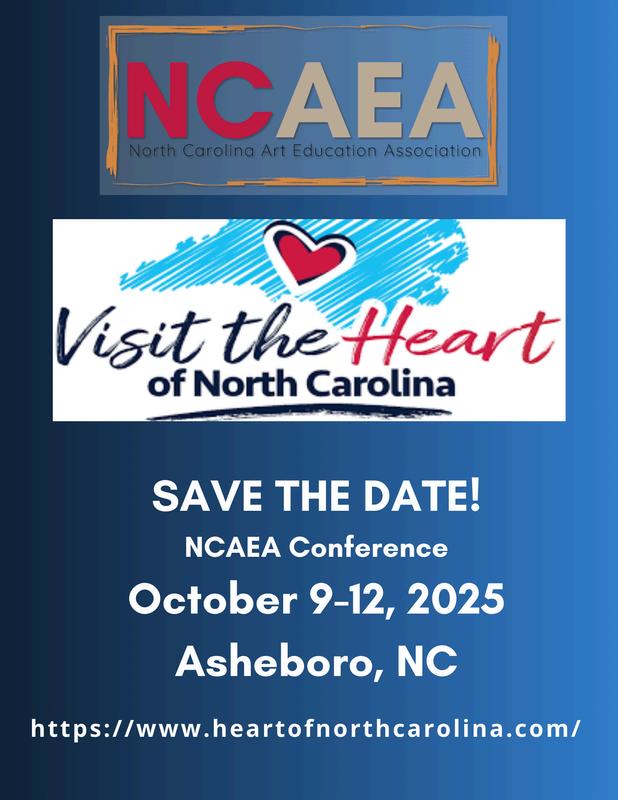
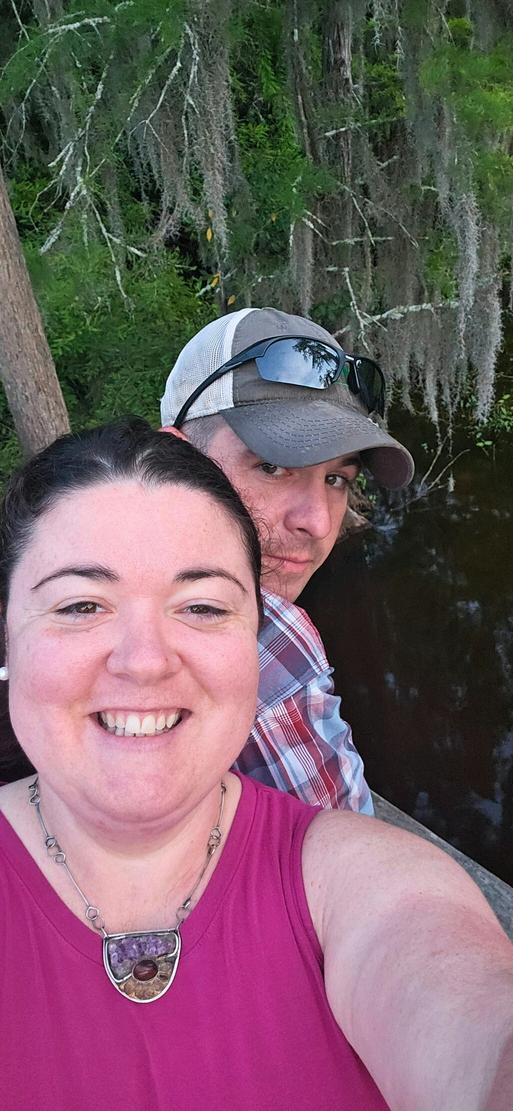
worked hard to survive, improve, and create.
How did you move forward this past year? Professional development is always something that moves me Being with like-minded people who understand the daily grind of art educators is fulfilling and affirming. You may not understand the potential disasters I’ve faced if you have never taught kindergarteners to use watercolor or 10th graders lino cutting We should earn badges of honor to wear on our chests as we conquer these challenges. My latest would be, “Survived 1st Week Teaching Middle School” What would yours say?
The board of directors of NCAEA met recently in a hybrid meeting. Executive council members attended in person at Meredith College. (Thanks again, Emily!) With the newly adapted constitution,
WHITNEY HERN PRESIDENT
there are changes to the board structure. Each board member works with a group of members from across the state of North Carolina to fulfill their duties. For instance, Region 4 has a committee. On that committee, there will be a chairperson, a chair-elect, and 4 to 8 members who work in that Region We hope to get a member from each county to serve on their regional committee. How better to plan your region's art show, professional development, or Teacher Tune-ups? Committee members can contribute professionally without sacrificing as much time as a full-fledged board member.
Are you interested in contributing to your region or division? Do you have ideas to support advocating for arts education in our legislature? Our Advocacy Committee may be the place for you! No matter your interest, I hope you find a group of folks to connect with this year. Our Association is more than an annual conference. It’s a network of humans ready and able to serve I’m hopeful for another year of moving forward, whatever that may look like. How will you grow in NCAEA this year?
Chair: Nancy Winn Elect:
Chair: Heidi Pfirman
Elect:
Chair: Sarah Brown
Elect: Phoebe Guice
Chair: Theressa Lewis
Elect: Allison Ellis
Chair: Lyn Lambros
Elect: Lori Ross
Chair: Lindsay DeBlasio
Elect:
Chair: Kathryn Szelasek
Elect:
Chair: Amy Lewis
Elect: Autumn White
In the last issue, I addressed the myriad of changes that were being made to our organization’s constitutional documents. Those changes were presented to membership, town halls were hosted to address questions and concerns, and the new constitution passed during our 2024 fall conference. Thank you to all the members who took the time to read through our changes and vote
With the new constitution, our voting procedures have been streamlined tremendously. Our quorum went from 26 to 5! This makes conducting business much easier in many waysgetting 5 people in the same room is easier than 26, to be sure While the number of voting members decreased, the amount of individuals being consulted has drastically increased This new version of our constitution allows for a variety of committees, each represented by one of our Members at Large. These committees allow for members to contribute in meaningful, yet manageable ways via their region, division, or interest group If you have ever wanted to be a part of the NCAEA board but thought it was more work than you could handle... Well,
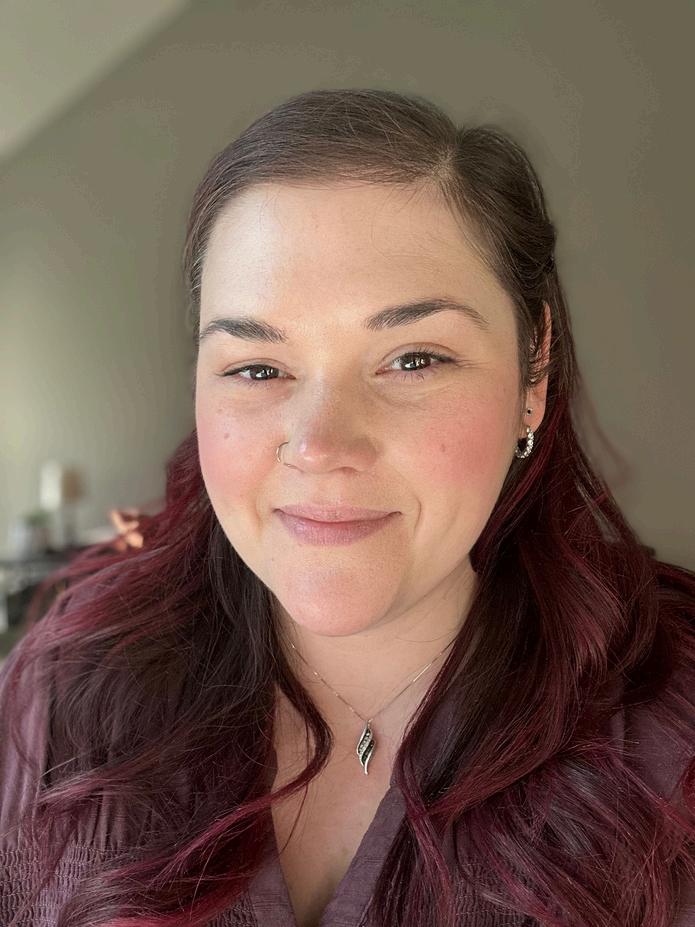
now is the time! A healthy board is not meant to be stagnant, filled with the same members year after year after year. We need new voices - we need you. Our new board structure has service opportunities to fit your schedule and give budding leaders the support they need to grow into game changers for arts education in North Carolina.
As you consider your future involvement, let’s be clear: these changes to our constitution were just the beginning. As I look into my own future with NCAEA, I see my time as President on the horizon I intend to keep this momentum and continue working with passionate art leaders across our state and nation to develop programs that benefit YOU, your goals, your classroom, and your students
In your service,
Chynna
“Visiting the River Arts District was both heartbreaking and thoughtprovoking Many street art pieces had been damaged or were no longer present, but we were able to discover some notable works that remained The entire area felt like a living tapestry of artistic expression, individuality, and hope for the future The district remains a beacon for renewal, brimming with the energy of new dreams and boundless potential.
- Kimberly Solomon
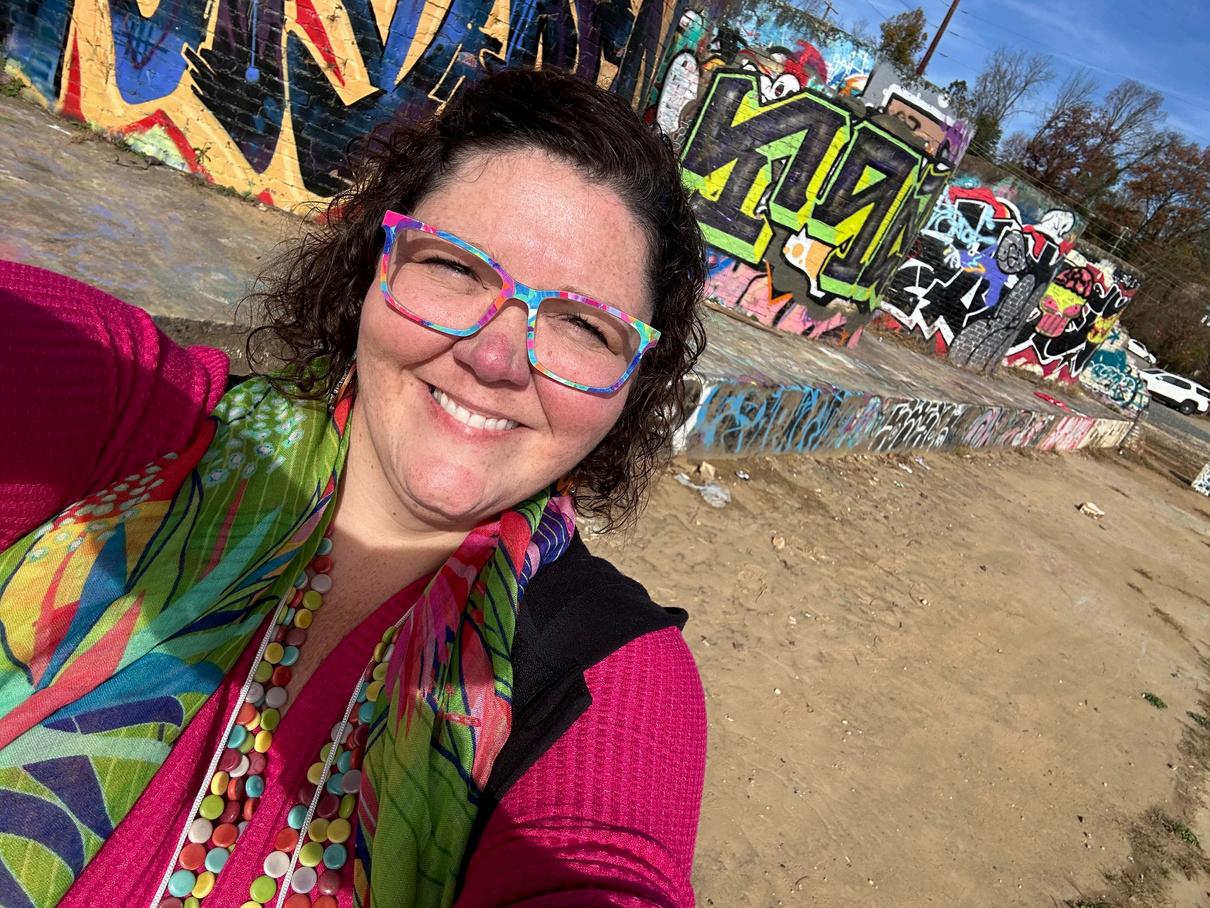
Something new was introduced at the 2024 NCAEA Conference: the option to go off site to gain CEU credit! Participants had choices such as visiting the Asheville Art Museum, walking the Urban Trail, and even touring the Biltmore Estate. Teachers submitted reflections on their journey and took selfies of their visits in order to receive credit.
We plan to continue to offer off site CEUs in the future as a way to aid participants and further explore the rich history of our North Carolina towns. Still unsure? Check out these wonderful reactions from NCAEA members like you.
“The glass center was really neat! I enjoyed the drawing mannequin the most It was such a beautiful form made from an unsuspecting material since we all know and love the wooden mannequin!”
- Mindy Ledbetter
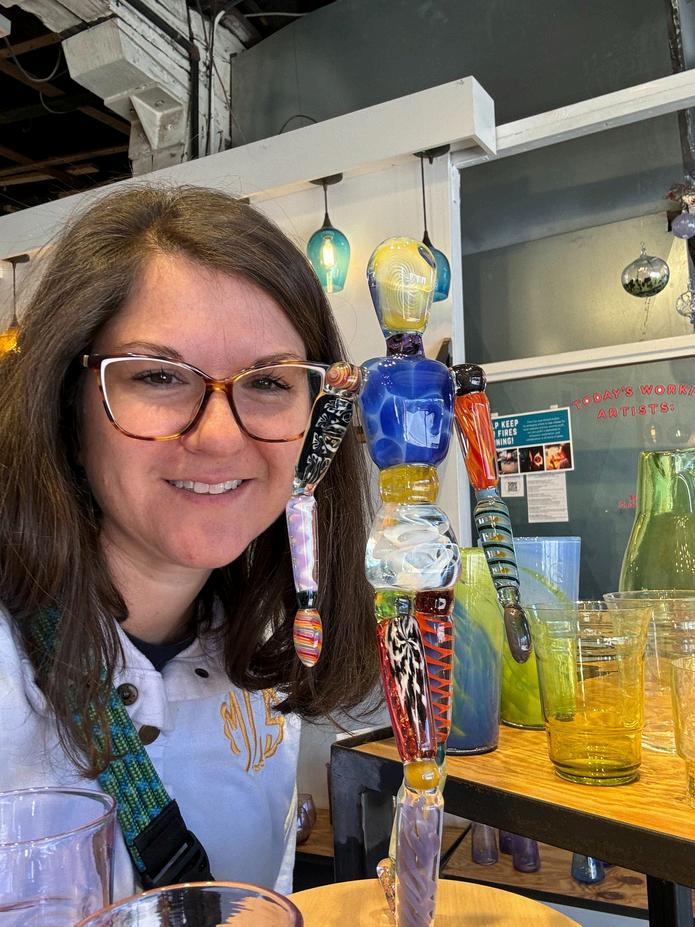
“The diversity within this medium was captivating, with each piece offering a unique interpretation of color, light, and form. [The exhibition] invited visitors to engage with the artwork...fostering a deeper connection with the natural elements and the creative process behind them.
- Karrie Ann Matias
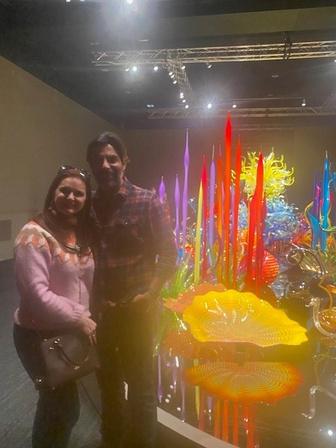
“I have visited the South Slope of Asheville previously and have always appreciated the murals in the area, but I did not realize there was a mural trail! How delightful So neat to see all of the different styles and decorations on the many buildings”
- Sarah McNeely
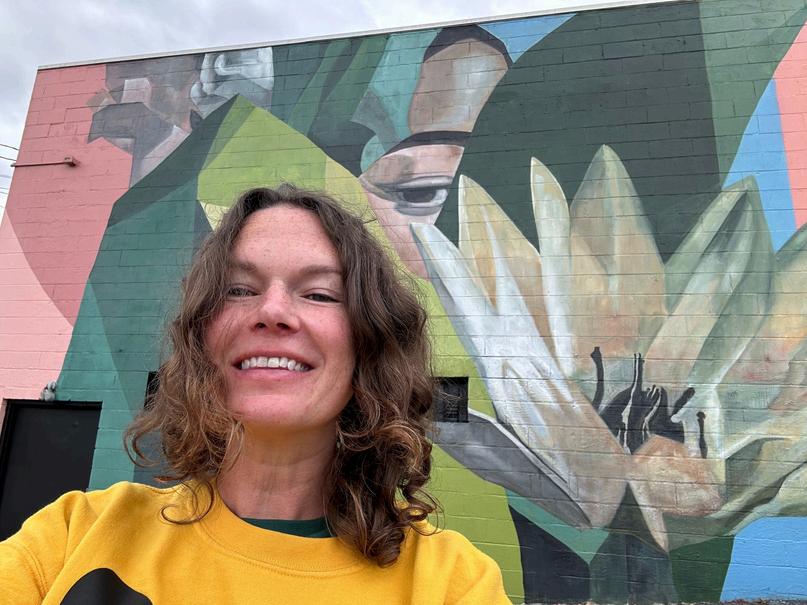
“I learned so much that I didn’t know about the creation of Black Mountain College and the people involved in its creation This piece spoke to me because... I love how the light casts the shadow marking the work feel larger.”
- Brian Imfeld
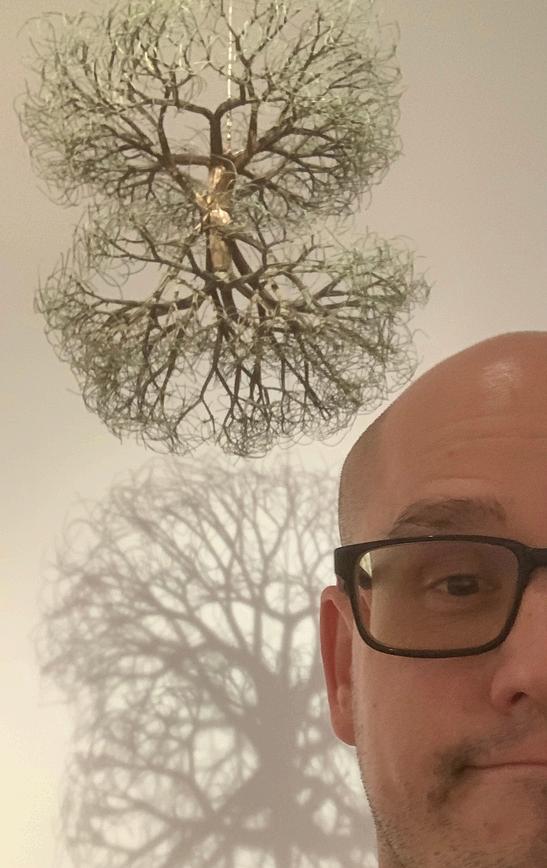
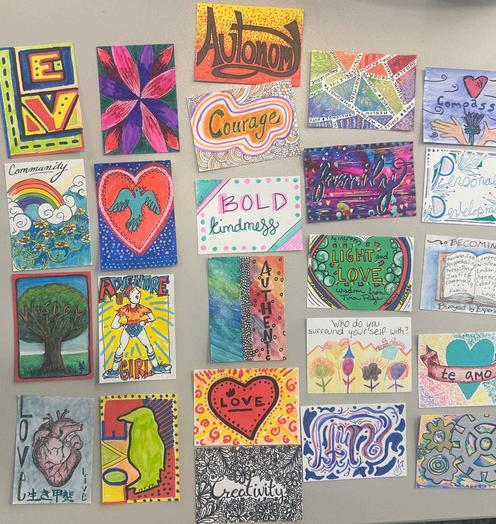
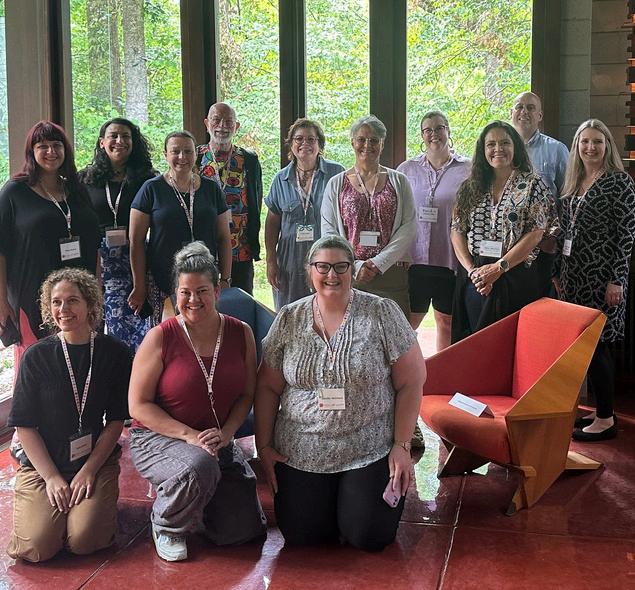
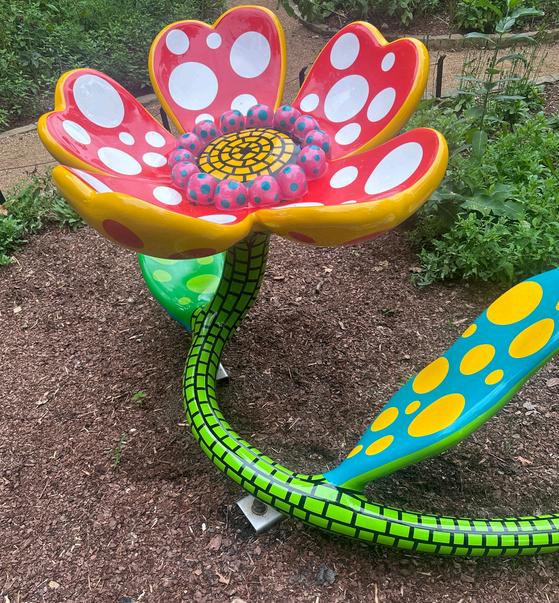
By Frann Paige
This past summer, I was honored to be selected for the NAEA School for Art Leaders (SAL) The National Art Education Association (NAEA) is committed to empowering art educators to flourish as leaders. This immersive five-day program is built on the initiatives of the NAEA Leadership Development Task Force and showcases five leadership models through remarkable experiences at the Crystal Bridges Museum in Bentonville, Arkansas. Twenty-five amazing art educators from across the United states participated SAL requires a ten-month commitment, beginning in June meeting monthly and culminating at the NAEA National Convention in March. We are creating three leadership experiments and a final capstone project. The program was led by Laura Grundler, Director of Learning and Program Development, along with many talented leaders who guided us throughout our journey.
Words cannot fully capture the transformative, collaborative, and meaningful learning experience I had, as well as the relationships I built Together, we learned, laughed, worked, cried, and developed our leadership skills. I now have a new family - MY SAL FAMILY.
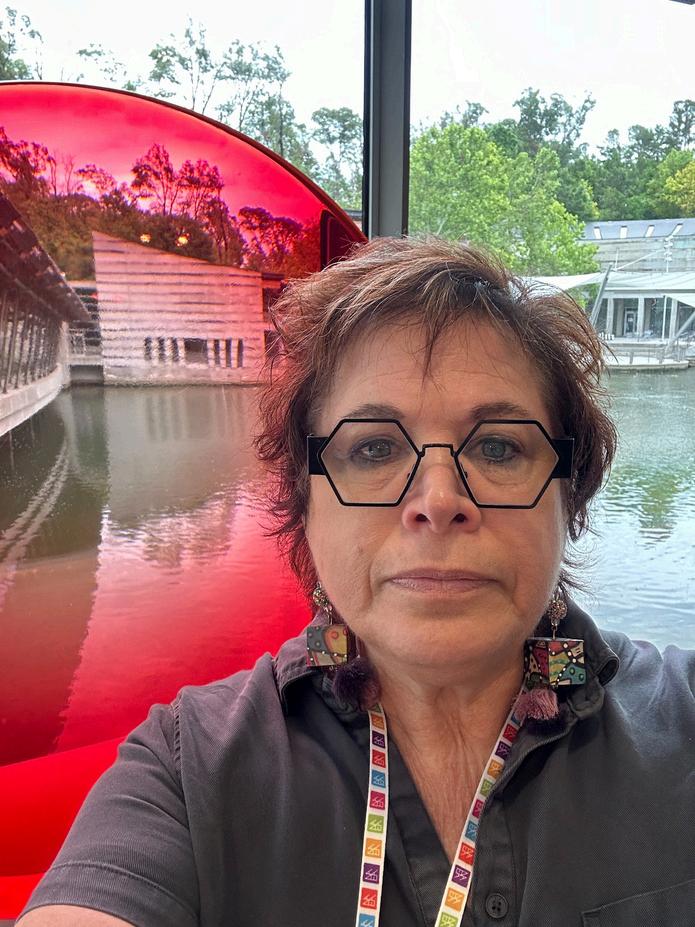
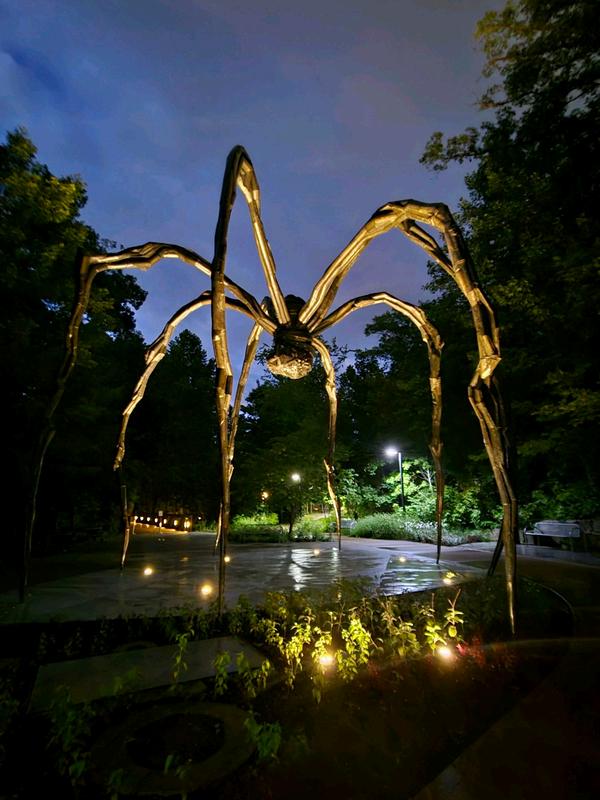
In additional to this amazing program, we had the opportunity to explore the stunning art at the Crystal Bridges Museum. It was truly INCREDIBLE! The mission of the Crystal Bridges Museum of American Art is to invite everyone to celebrate the American spirit in a space that harmonizes the power of art with the beauty of nature We also stayed at the 21C Hotel, which was an experience onto itself. The hotel exceeded my expectations, featuring two striking installations: Orange Tree, a large-scale sculpture and Making Change, a Fleetwood Cadillac limousine adorned with thousands of coins The hotel serves as a gallery museum, showcasing rotating exhibits, and numerous oversized green penguins added a whimsical touch to the halls
As I stated, words cannot adequately capture the true value and experience of this program.. I highly recommend this program to anyone eager to excel in leadership within the fields of arts, education, and advocacy
BY SUSAN HESS
According to Merriam-Webster, the definition of ambition is determination; having a desire to achieve a particular goal: aspiring. Whereas, the definition of overwork is: cause to work too hard, too long, or to exhaustion
After listening to a segment on a radio program about ambition, I started thinking about why some art educators’ “ambitions” may lead to being “overworked”? When pondering this, I’ve come up with some ideas on my own as to why this may occur. First, is the need to be recognized. Second, is wanting to be helpful to everyone Third, is to move up Fourth is the love of their career Fifth, is for more money Sixth is pressure. As each one is examined, it is easy to see how these ambitions create a situation of overwork. Again, these are my own explorations and ponderings about this subject
In the ambition of being recognized, a teacher can become overworked, due to the fact that they take on more work to get noticed One may want to explore the reasoning behind why
they may want to be more recognized Perhaps, administration does not pay as much attention to the Art Educator as they do to the regular classroom teachers. Some teachers may not mind this, but to the art educator who puts in many hours of creating a program that follows the curriculum and nurtures the creative minds of children, this can be a letdown. They want the administration to see the wonderful things they are doing in their classroom as well When this doesn’t happen, perhaps they feel that they need to do extra work or
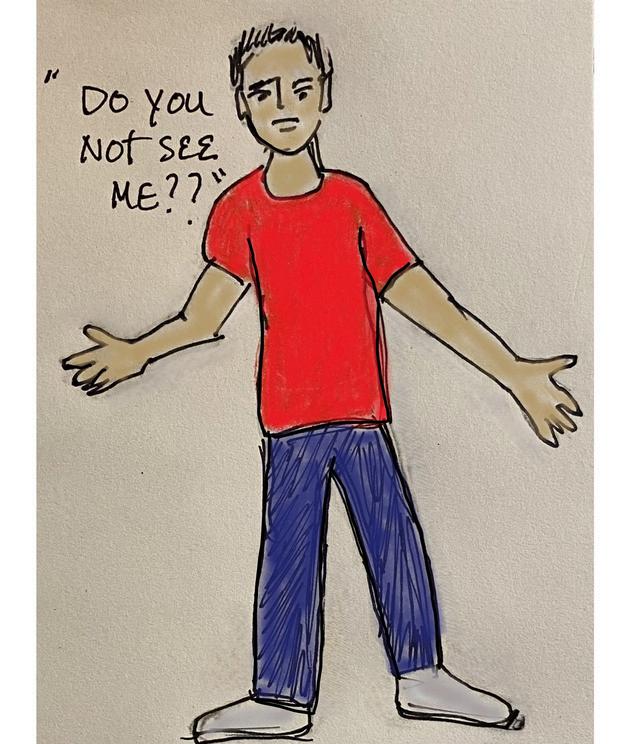
add beyond their program to get noticed, thus becoming overworked.
By the need to always be helpful, I am identifying the art educator who truly does want to be helpful to others, (“Of course I can help you with this!”). One may not necessarily view this as an ambition at first, but with further thought, one can see that being overly helpful allows the art teacher to feel seen and valued; be a team player; and as a team player able to do multiple tasks. This is an example where one becomes overworked because they cannot say “ no ” Art teachers are often asked to help make things or draw out things or create props for other teacher colleagues that eat into their own time It is okay to help out, but when it becomes a burden due to not having time to work in your own classroom, one has to be able to set boundaries. Learning to say “ no ” to some things or being honest about not having time to do something could help in this instance A friend recently mentioned that her mother would tell her: “Saying ‘ no ’ gives someone else an opportunity”. Pick and choose how you can help out without becoming overworked
For this ambition, the art educator takes on more so they can move up to a new position, be it team leader; an administrator, etc They take on more responsibilities and volunteer more at their school, write numerous
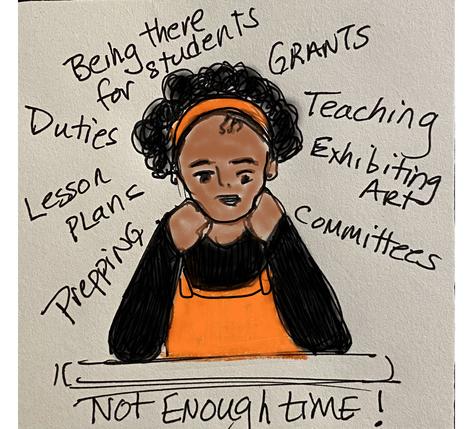
grants, as well as taking classes in order to help them with the achievement of a new position They are trying to be recognized for all they do in addition to their job as an art teacher. Of course, all these extra efforts can lead to being overworked. They have little time of their own, as they expend their energy to move up, therefore, not recharging or taking care of their mental and physical health. One needs to evaluate whether the new position is worth all the extra work. Is this truly the path you want to take, and if it is, recognize you will be sacrificing time committed to teaching Is the end result a justification of the overwork and time missed?
In this category, teachers take on more because they love their job as an art educator and want to do as much as they can to instill this love in their students and show this as well to their colleagues, via the projects they do with their students They go beyond what is in the curriculum,
which is fine. However, they can become so immersed in their love for teaching art, that they forgo other things, such as taking time for themselves and their families They may spend time on the weekends, tweaking lessons to be just right, rather than relaxing and taking a mental break. There is nothing wrong with loving what you do for your career, however, if one does not take some time off, one can become overworked and ultimately lose that love for their career.
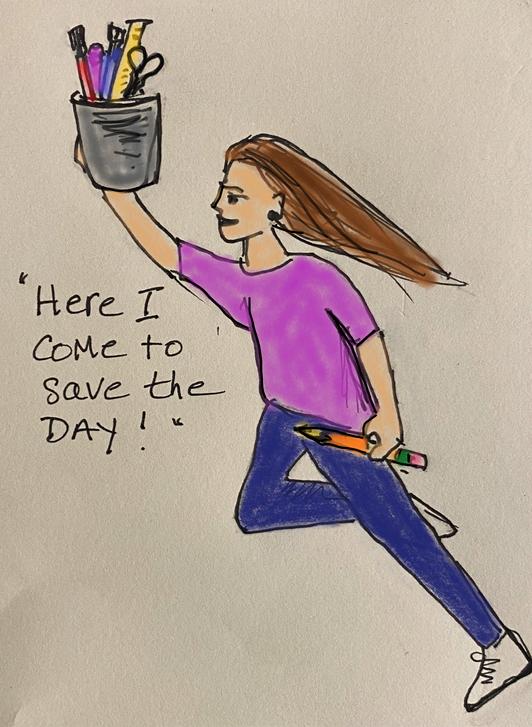
Pressure can come from the art educator themselves, where the feel they need to do better, or need to achieve certain goals they created for themselves. The ambition to achieve these personal goals can prove exhausting and take away their true focus in educating students in the arts: to nourish and encourage
students in their creative explorations. Setting reasonable, achievable goals can lighten that pressure. Pressure can also come from administrators They, the administrators, may have certain standards that they set for the art educator, beyond those already set by the state. This extra pressure pushes the art educator to try to achieve these extra goals on top of what their job position states
As mentioned, these are a few categories I have come up with to correlate ambition with being overworked There are consequences associated with these ambitions, some of which have been mentioned; I will list them, along with other consequences.
Other interests are left by the wayside due to not enough time and being fatigued; 1. One becomes overtired; 2 Competition is encouraged, which causes teachers to do more to be recognized and often leads to discouragement if not noticed; 3. Not enough time is left to devote to other things in life; 4
Time with family and friends is limited; 5. One may have to work more hours to fit in all they aim to accomplish; 6. Burnout; 7 Spreading oneself too thin; 8. Setting lofty goals; 9. Trying to please administrators to the detriment of students 10.
Here are some thoughts about how
can be addressed:
First, one should be clear of their values: what are they? How can one best serve their students? Second, are competitions really fair? There could be and probably are many articles that explore this. Should teachers be competing against other teachers to be recognized as the best teacher? Surely, there are many teachers that do a wonderful job as a teacher, yet why should only one be recognized? This creates an atmosphere of jealousy, and discouragement, especially for those that work hard year after year, but do not get recognized for this All teachers that are doing their job should be recognized and celebrated. Third, art educators are sometimes made to feel like they should be putting out products to decorate their school Administrators should focus on the process, not the product. Art is a creative process, students in school are not professionals, they are learning, and exploration is a main part of the process, there is not always a beautiful product Fourth, a good way to make time for mental health and time with family and friends is to try to do school work on weekdays only (as much as possible), and not on the weekends Fifth, perhaps contests should be geared more to the upper grade levels rather than elementary. Elementary students should not be made to feel that they are competing with one another, this results in self doubt and low self esteem in some students Art at the
elementary level should be a place for exploration, where all children should feel successful. Sixth, create boundaries for yourself, do not take on more than you can responsibly handle You are in charge of what you do. And, seven, continue to advocate for yourself and your art program. For instance, point out how your lessons correlate to what students are learning in their regular classrooms This is an easy way to promote your teaching without a lot of stress.
I’m sure there are lots of other ways to address this, and you may not agree with all I’ve written, but as I mentioned, these are just my own ponderings. Take care of yourself, because if you are well, you will pass on those good ‘feels’ to your students!
Susan Hess Co-Chair, NCAEA Emeritus Division NBCT (Retired)


Have other insights? By Design wants to hear from you!
Artists need to have THICK skin As I write this, I have received three rejections from galleries this week. Ouch. My colleague, another talented photographer, received four during the same week We try to support one another, but the sting is still present

Imagine what our young students are going through when they get bad news. Many high school students will experience their first rejection under our watch How can we prepare them to keep their heads held high and walk steady toward the next art opportunity knowing they may get rejected again?
The story of the Salon des Refusés in art history is a great place to start. Edouard Manet was all about the new, the fresh perspective in art and life He was a bit of a rebel from the get-go Surrounded by the rockstar painter environment that was Paris circa 1863, the packed Louvre and its treasures
BY TRISH KLENOW
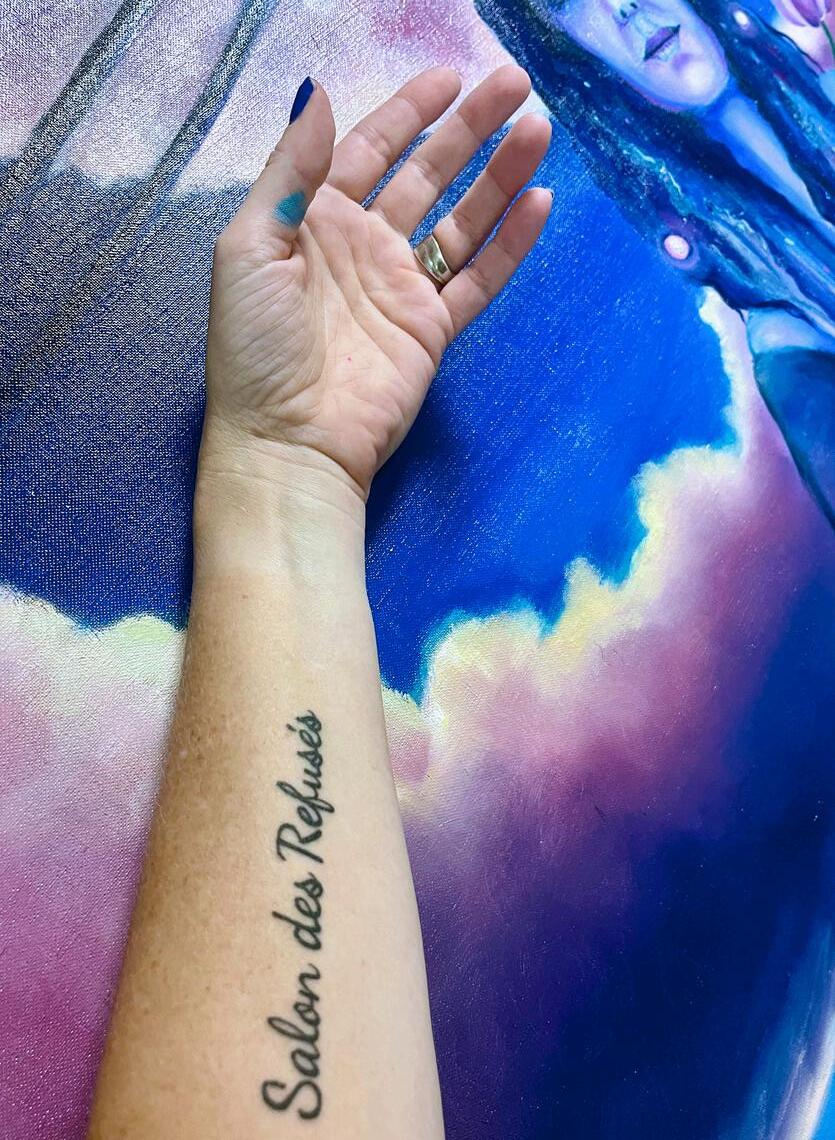
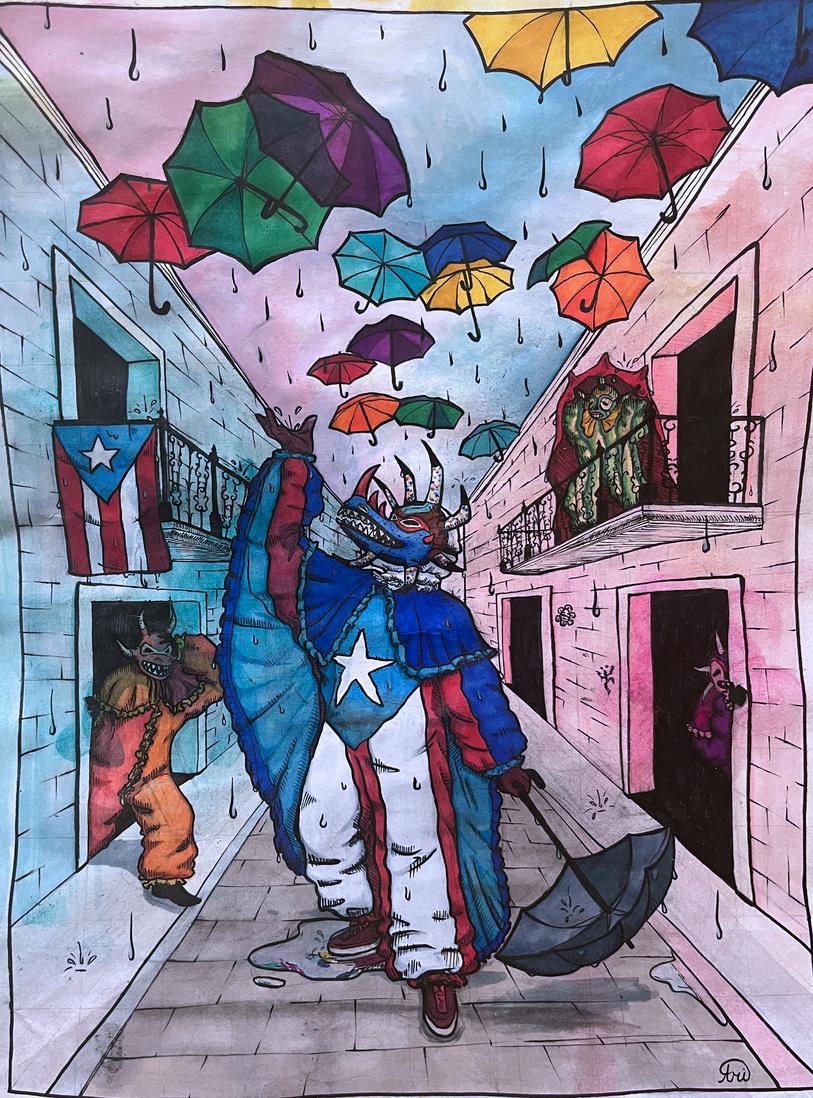
Mixed media work by 11th grader Ariana Lopez de Jesus rejected from Artsplosure
were highly regulated by a committee The Paris Salon delivered high quality, albeit repetitive, subjects year after year In 1841 oil paint was put into convenient tubes and freedom from being tethered to dark studios began The birth of plein air accompanied by new ways of thinking (Age of Enlightenment) was a recipe for experimentation in color and technique. Sprinkling in an upsurge of art from Japan that illustrated new compositions and the old way of seeing and making barely stood a chance Manet and friends were swept up and challenged the old ways of creating art; brush strokes were l
ooser, colors became bolder, light representation changed, and the old guards of the art world said, “ no thank you!” in the form of rejection from the Paris Salon (great big annual show at the Louvre) Manet was deterred, but the spurn led to inspiration in the form of a spite show; the Salon des Refusés (the show of the rejected). A curious public guaranteed an audience, perhaps the public had also grown tired of seeing grandiose horse-filled battle scenes that smacked of propaganda. The movement Impressionism soon followed and the path of art history as we know it leapt and catapulted into a gorgeous array of experimental “isms” and movements This all came from rejection and action. This ability to turn a bitter defeat into something that inevitably put Manet, Cezanne, Monet, Morisot, Cassatt, and dozens of others at the TOP of the art food chain is a profound twist.
In addition to teaching art I am also a working artist I have had nine solo shows, and been included in over 120 juried shows. I create over two dozen oil paintings a year in my studio on average. About every three years I have a new series of work that I promote I consider myself mid-career There is always more to learn, to try, to improve. I have been represented by GOOD Galleries, I have shown at
bars and clubs, libraries, and my basement during informal art parties, I have even been in prestigious art museums, but it’s never truly easy, always there’s a bit of a hustle. THIS is the thing that needs to be communicated to students Artists must be very hungry and committed, and be willing to pivot while still being authentic. Maybe, even create and work with spite in one ’ s spine.
On a spreadsheet I keep a running tally of what shows I have entered, gotten into, and been rejected from. The rejections are highlighted in bright angry cadmium red light Usually, I share this document to my advanced classes right before the Scholastic Art Contest results are posted, so they know their experience is by no means a lonely one One of my strategies to survive rejection ennui is to enter a LOT of things at once, sometimes the law of averages will grant one “in” along with all the “outs”.
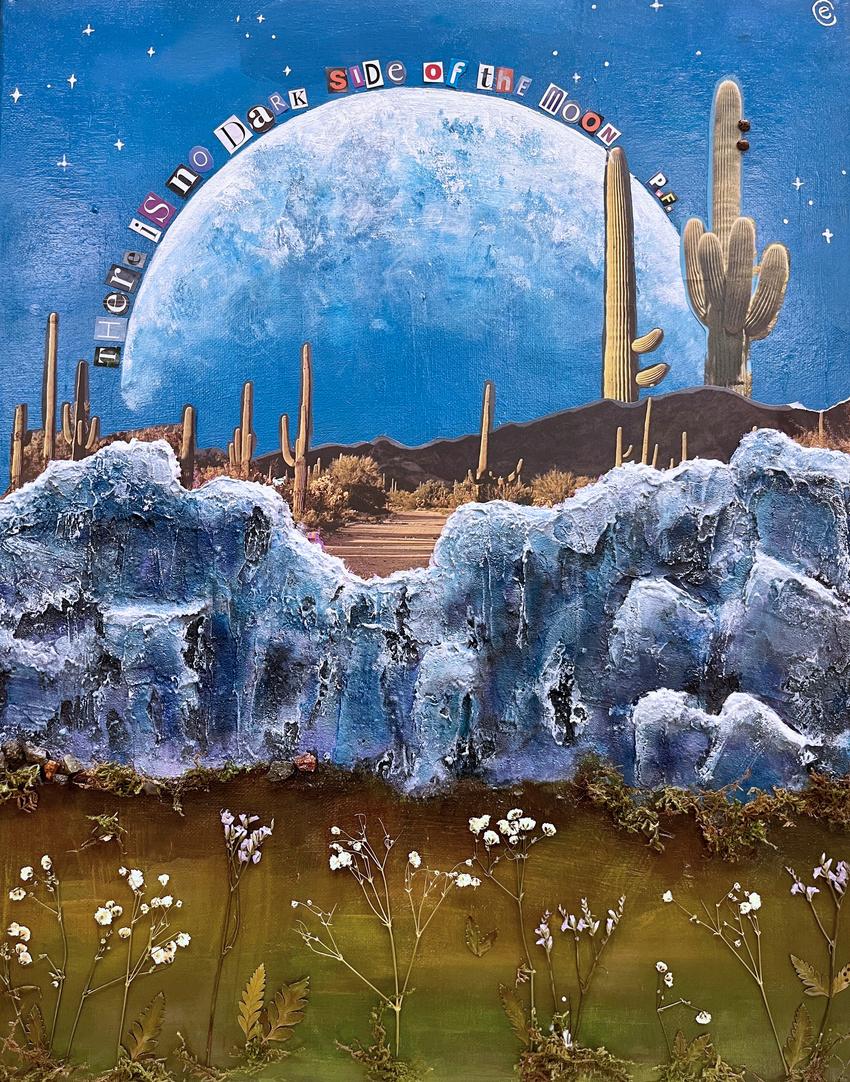
help keep your mood up and don’t let the art world/the judges/professors, gaslight you to thinking your work is not worthy
Trish Klenow teaches art at Green Level High School in Cary, NC Her work and her students work can be seen on Instagram @trishklenow
I’ve always loved Monet’s story
Last year I tattooed the phrase Salon des Refusés on my left arm as a reminder that something truly great can come from a rejection Even rockstar artists get rejected All one can do is continue to create, to make for oneself. Surround yourself with supportive artists and friends of the arts to
Title Image: Oil Painting, 34”x 44” by Trish Klenow rejected from Raleigh Fine Arts Society NC Artists Exhibition
SECRETARY Leslie Burwell secretary@ncaea.org
TREASURER Maria Robinson treasurer@ncaeaorg
ADVOCACY Lee Haywood advocacy@ncaeaorg
ED&I Vacant Position edi@ncaeaorg
MEMBER AT LARGE 1 Pooja Nair memberatlarge1@ncaeaorg
MEMBER AT LARGE 2 Jamielle Orrell memberatlarge2@ncaeaorg
MEMBER AT LARGE 3 Shila Alexander memberatlarge2@ncaea.org
ELEMENTARY Suzanne Sload elementarydivision@ncaea.org
MIDDLE Natasha Young middledivision@ncaeaorg
SECONDARY Marley Moreno secondarydivision@ncaeaorg
MUSEUM Michelle Harrell & Julia Hood museum@ncaeaorg
HIGHER ED Borim Song highereducation@ncaeaorg
SUPERVISION LeighAnn Little admindivision@ncaeaorg
RETIRED/EMERITUS Danny Hartman retireddivision@ncaea.org
PRE-SERVICE Tiffany Zarinana preservicepresident@ncaea.org
PRESIDENT Whitney Hern president@ncaea.org
PRESIDENT ELECT Chynna Oaks presidentelect@ncaeaorg
PAST PRESIDENT Melissa Poppe presidentelect@ncaeaorg
REGION 1 Crisianee Berry & Nancy Winn region1coordinator @ncaeaorg
REGION 2 Heidi Pfirman region2coordinator @ncaea.org
REGION 3 Sarah Schumacher region3coordinator @ncaea.org
REGION 4 Theressa Lewis region4coordinator @ncaeaorg
REGION 5 Lyn Lambros region5coordinator @ncaeaorg
REGION 6 Lindsay DeBlasio region6coordinator @ncaeaorg
REGION 7 Amy Lewis region7coordinator @ncaeaorg
REGION 8 Kourtney Yelton region8coordinator @ncaea.org
EDITOR Chynna Oaks bydesign@ncaeaorg
AWARDS Vacant Position awards@ncaeaorg
WEBMASTER Jodi Aker webmaster@ncaeaorg
SOCIAL MEDIA Amanda Gordon socialmedia@ncaea.org
SCHOLARSHIP Sara Sagar scholarship@ncaeaorg
YOUTH ART MONTH Jana Farris yam@ncaeaorg
HISTORIAN MaryLu Flowers-Schoen planning@ncaeaorg
ADAPTIVE ARTS Christina Bell adaptivearts@ncaeaorg
INDEPENDENT SCHOOLS Elizabeth McCleod independentschools@ncaeaorg
NAHS Vacant Position nahs@ncaeaorg
NJAHS Vacant Position njahs@ncaea.org
PRESERVICE SPONSOR Emily J. Howard preservice@ncaeaorg
GENERAL ASSEMBLY Anne Courie-Meulink & Amanda Aguayo generalassemblyart@ncaeaorg
DPI REPRESENTATIVE Laura Stauderman DPIrep@ncaeaorg


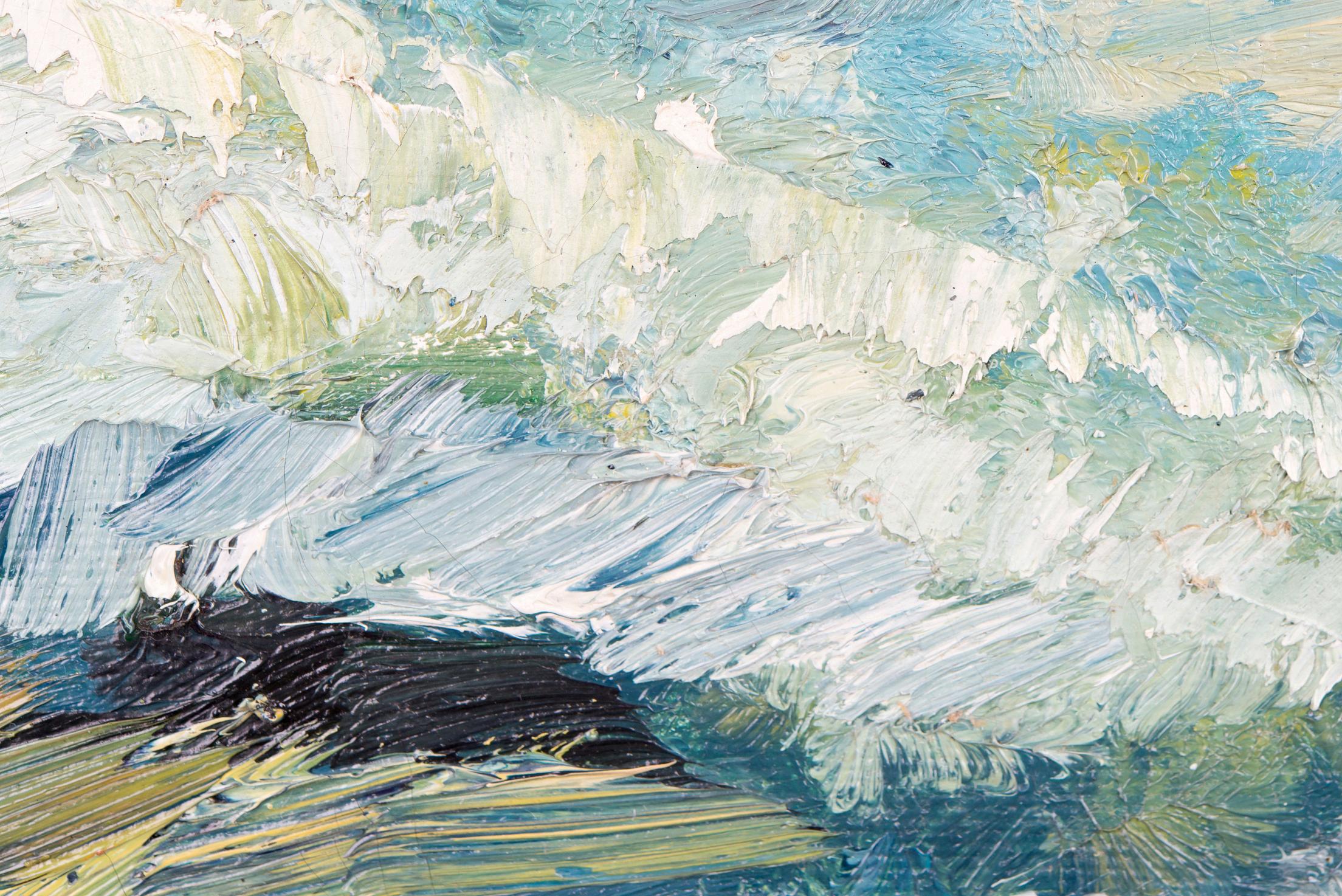
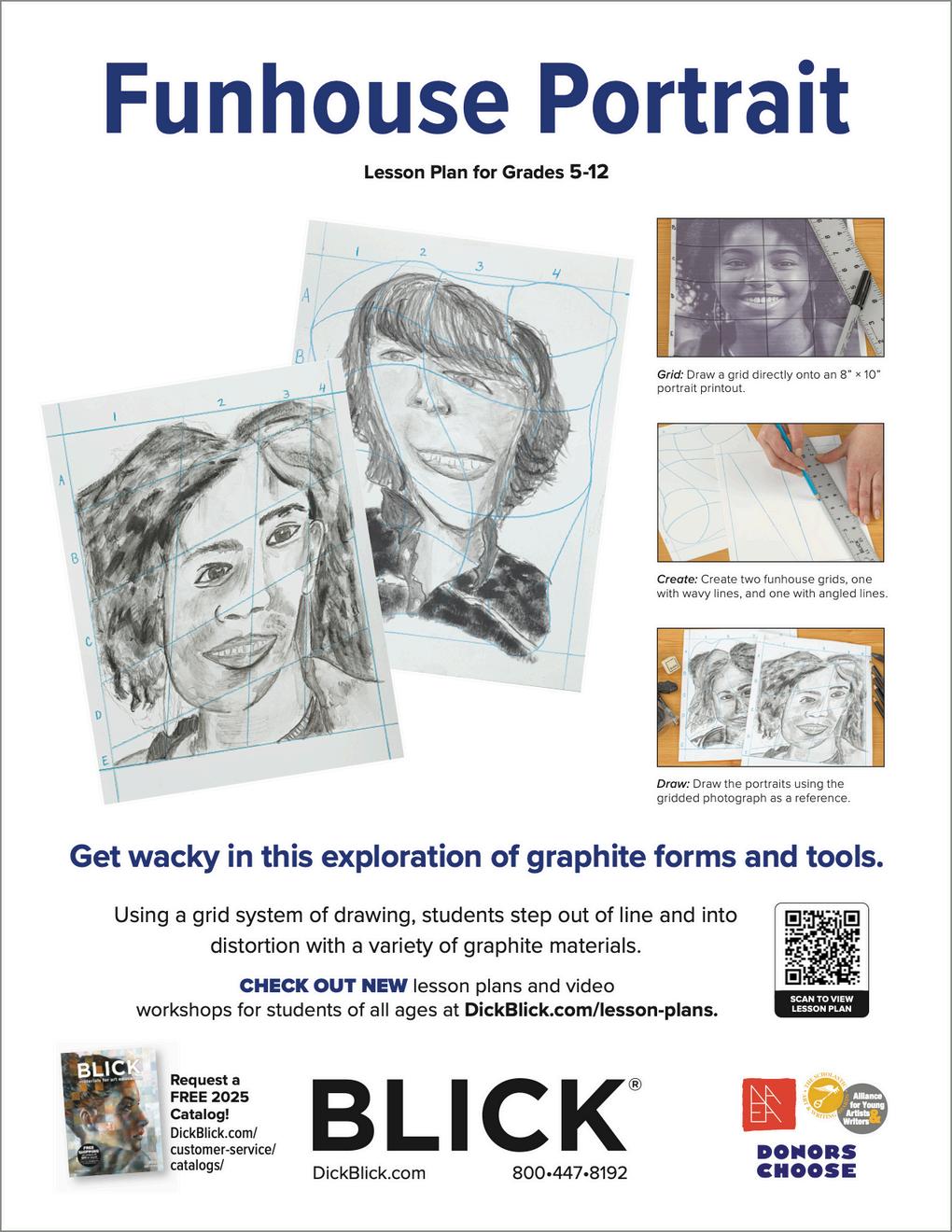
Want your student's work featured in the By Design? Submit work here: https://forms.gle/no27yPXCApChuHzV9
Please tell us what you thought of this issue by completing our survey: https://tinyurl.com/y9y4y377